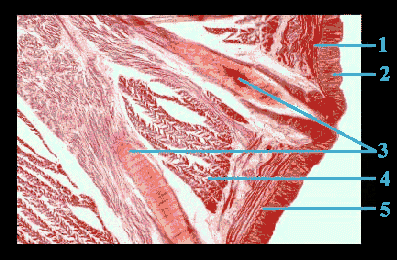Earthworm - Muscular System (original) (raw)
Earthworm - Muscular System
The earthworm has two muscles which it uses for locomotion, both of which run the whole length of the worm's body. These two muscles are circular muscles and longitudinal muscles (Musurca). The longitudinal muscles are the inner layer of the muscular series and cradle the coelom, the innards of the earthworm (Noble). When the circular muscles are contracted, the diameter of the body is reduced, making the worm thin. When the longitudinal muscles are contracted, the length of the body is reduced, making the worm short. So, if an earthworm is short and thin, which is a common reaction, both types of their muscles are contracted. Obviously, if the whole muscle, circular or longitudinal, contracted all at once, the worm would not move but just alter its size and shape. The contractions of an earthworm's muscles resembles a wave, contracting and relaxing a few segments at a time. The process is similar to the digestive process of peristalsis, but instead of squeezing along a bolus of food, the muscular peristalsis of an earthworm moves the whole organism.

- circular muscle layer 2) cuticle 3) setae 4) longitudinal muscles 5) epidermis
Picture retrieved from http://bioweb.uwlax.edu/zoolab/Table_of_Contents/Lab-06/Earthworm_Setae/Seate2/seate2.htm
Traction is achieved through bristle-like hairs called setae which are distributed among the worm's segments. If you ever noticed that a worm feels somewhat prickly, you are feeling the setae. The setae are imbedded in the earthworm's longitudinal muscles (Noble). Therefore when the longitudinal muscle is contracted and relaxed the distance between the setae of different segments fluctuates. To move, an earthworm elongates its body and anchors its anterior with its setae and pulls the rest of its body forward. Few soft-bodied organisms have such an effective mean of movement.


